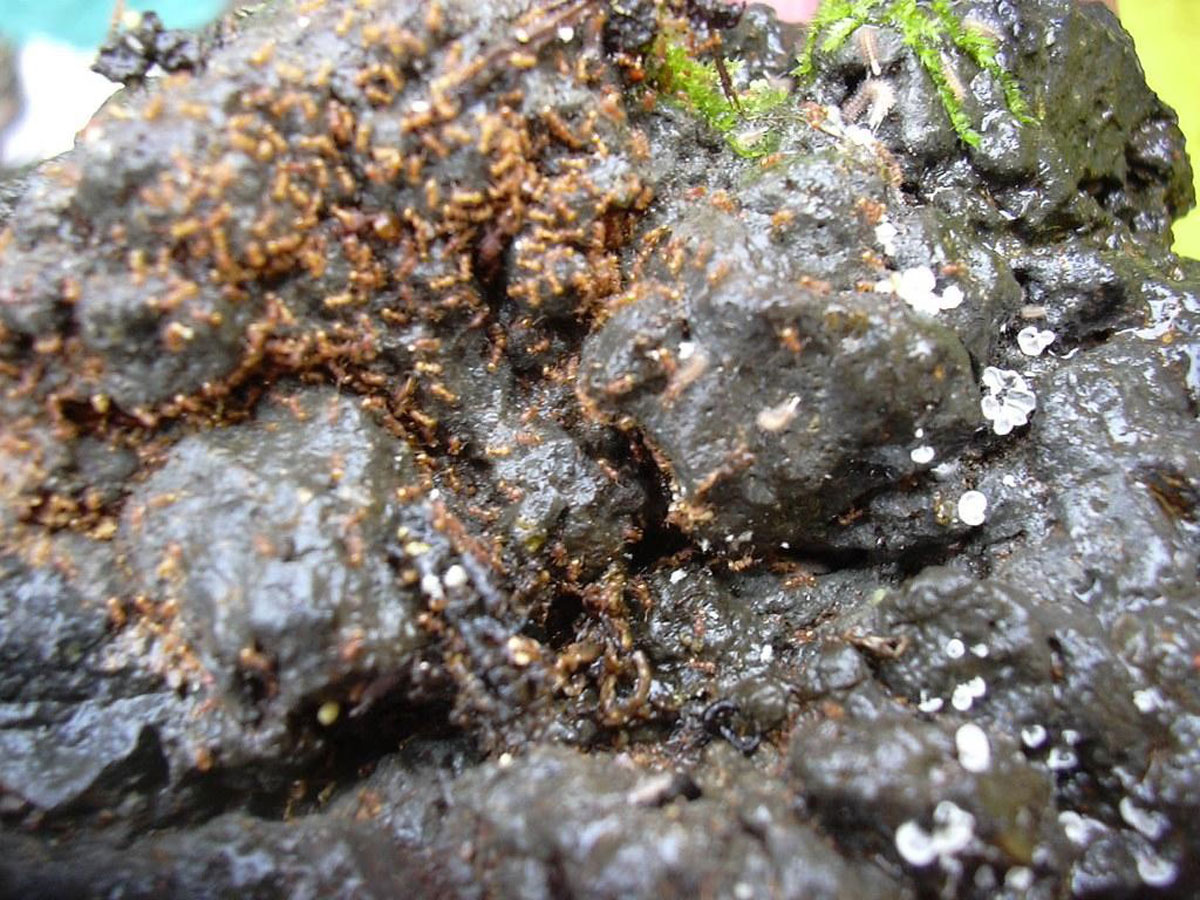A tiny but potentially serious invader is spreading into China’s farming communities, threatening crops. Can innovation put a stop to this infestation before it gets out of control?
Earlier this year, four scholars from South China Agricultural University in Guangzhou published a paper in the Journal of Integrative Agriculture to alert their peers to a disturbing discovery. The scientists say they’ve found colonies of little fire ants (Wasmannia auropunctata) thriving along the roadsides of rural Chaonan District, Guangdong Province. They say this is the first time this particular invasive ant species has been confirmed to inhabit parts of mainland China. Other little fire ant colonies are almost certainly creeping into other parts of the countryside, or soon will be (https://www.sciencedirect.com/science/article/pii/S2095311922639030).
Farmers should worry, they say.
A nasty bite for its size
“This species is considered an agricultural pest.”
Like its cousin, the now ubiquitous fire ant (the scourge of picnickers everywhere) the little fire ant is a native of Central and South America but has been steadily invading other parts of the globe. As its name suggests, the little fire ant is smaller than other fire ant species, but its bite still carries a nasty surprise. Its alternate name, the “electric ant,” comes from reports that being bitten by one feels something like a little painful jolt of electricity on the skin.
The ant wreaks ecological havoc as an invasive species, attacking arachnids and the hatchlings of ground nesting animals. It’s also dangerous to curious animals, wild and domestic alike. A sting to the eye “can cause blindness in indigenous and domesticated animals” as the new report from China reminds us.
However, the researchers’ main concern is the potential impact on Chinese agriculture, especially on smallholder farmers in China who may be unable to afford eradication measures. As they note in their paper, “this species is considered an agricultural pest due to its behavior of tending to hemipteran insects that transmit plant diseases.” Hemiptera is a very large order of insects made up of tens of thousands of different species, including aphids.
Pastoral ants
Little fire ants or electric ants are mainly hunter-gatherers. But, as it turns out, this particular insect species also practices a type of agriculture of its own. Little fire ants are part of the family of ants entomologists know casually as the aphid ranchers.
Long before humans learned to herd cattle in pastures, some species of ants evolved the habit of deliberately caring for aphids that secrete a type of honeydew from their abdomens. These aphid ranching ants essentially feed the aphids and chase off aphid predators; some will even deliberately relocate their aphid herds to better or more abundant food sources, to fatten them up. Aphid ranching ants tend to their aphid herds just as tenderly and carefully as any dairy farmer in Wisconsin would tend to a herd of cattle. And like dairy farmers, aphid ranching ants also “milk” their aphids, stimulating them in a way that causes the aphids to secrete their honeydew concoction, which the ants feed on.
The problem is that aphids are a threat to crops since they can devour stems and leaves and also spread crop diseases. Almost a decade ago, a study out of the Solomon Islands concluded that a little fire ant outbreak was seriously threatening smallholder and subsistence farming on the archipelago. Aside from biting farmers and animals, the little fire ants were spreading aphids throughout gardens and smallholder plots everywhere—the ants were responsible for a nasty aphid infestation. As a result, this tiny insect “has the potential to inflict considerable crop loss in rural subsistence gardens in the Solomon Islands,” the Pacific Island research team warned
(https://onlinelibrary.wiley.com/doi/abs/10.1111/jen.12033).
The southern China investigative team said it may be too soon to know just how bad the little fire ant infestation is getting there or how seriously these ants are harming Chinese agriculture today. But they’re not waiting around to find out. They recommend authorities and farmers take immediate action to protect crops—mitigation measures should include efforts to wipe this species off China’s map for good, they say. “Monitoring and rapid eradication programs of this invasive species are required as early as possible.”
“Monitoring and rapid eradication programs of this invasive species are required as early as possible.”
The little fire ant is an unusual and unique agricultural pest. This species doesn’t necessarily damage crops directly, but it can cause serious crop losses indirectly by turning farmers’ fields into aphid pastures. Authorities in China are now pondering their options. Grow Further is monitoring the situation and may support work to address fire ants, either to prevent their spread or to deal with them if they become a bigger problem in the future.
— Grow Further
Photo credit: A colony of little fire ants near Hilo, Hawaii. Starr Environmental.




